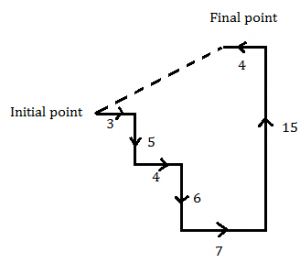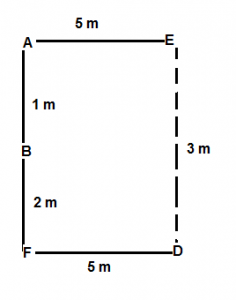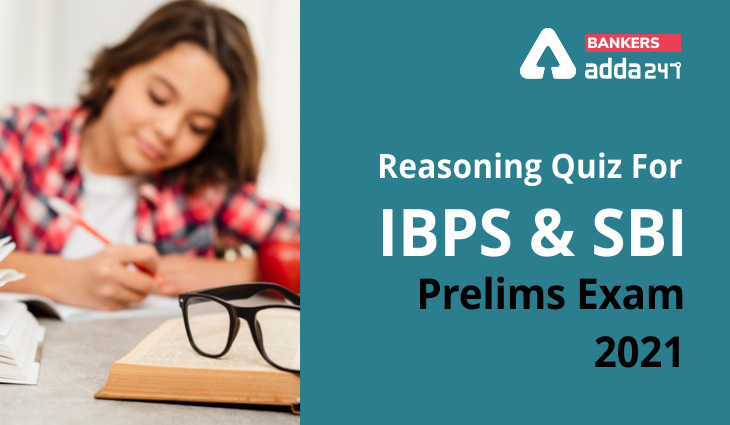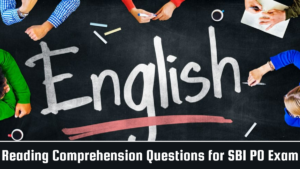Table of Contents
Direction (1-5): Read the information carefully and answer the questions:
Eight persons A, B, C, D, K, L, M and N live on different floors in the same building, the building has eight floors from 1 to 8 in such a way that ground floor is numbered 1, the above floor is numbered 2 and so on. The top most floor is numbered 8.
There are only three persons lives between B and A who lives on odd numbered floor above the floor on which M lives. There are only two persons live between the floor on which C and D live. K lives immediate above the floor on which B lives. M lives on an even numbered floor. C lives on an even numbered floor below the floor on which N lives. L lives one of the floors below N but above B’s floor.
Q1. Who among the followings lives on topmost floor?
(a) A
(b) D
(c) K
(d) N
(e) None of these
Q2. L lives on which of the following floor?
(a) 1st
(b) 3rd
(c) 7th
(d) 5th
(e) None of these
Q3. How many floors between K’s floor and C’s floor?
(a) Four
(b) Three
(c) Five
(d) Two
(e) None of these
Q4. Who among the following person live immediate above C’s floor?
(a) B
(b) K
(c) D
(d) A
(e) L
Q5. How many persons live above M’s floor?
(a) Two
(b) One
(c) Three
(d) More than three
(e) No one
Directions (6-10): In these questions, relationship between different elements is show in the statements. The statements are followed by conclusions. Study the conclusions based on the given statements and select the appropriate answer:
Q6. Statements: N > Z ≥ Y = J ≤ K < Q ≤ B, C > Y
Conclusions: I. Y < B II. C ≥ Q
(a) Both conclusions I and II are true
(b) Either conclusion I or II is true
(c) Only conclusion I is true
(d) Neither conclusions I nor II is true
(e) Only conclusion II is true
Q7. Statements: Z ≥ Y = J ≤ K < Q ≤ B; A ≥ Z
Conclusions: I. A > Q II. A ≥ J
(a) Both conclusions I and II are true
(b) Only conclusion II is true
(c) Neither conclusion I nor II is true
(d) Either conclusions I or II is true
(e) Only conclusions I is true
Q8. Statements: T < I = Z ≤ H; G < I
Conclusions: I. H > T II. H > G
(a) Both conclusion I and II are true
(b) Either conclusion I or II is true
(c) Neither conclusion I nor II is true
(d) Only conclusion I is true
(e) Only conclusion II is true
Q9. Statements: F < N < P ≤ R ; W ≥ P; R ≥ X
Conclusions: I. N < X II. W < F
(a) Only conclusion II is true
(b) Either conclusion I or II is true
(c) Both conclusion I and II are true
(d) Neither conclusion I nor II is true
(e) Only conclusion I is true
Q10. Statements: K = F < S < P ≤ T > M; W ≤ P
Conclusions: I. W ≥ F II. K > W
(a) Neither conclusion I nor II is true
(b) Both conclusions I and II are true
(c) Only conclusion II is true
(d) Either conclusion I or II is true
(e) Only conclusion I is true
Direction (11-13): Study the following information carefully and answer the given questions.
A person walked for 3km, then took a right turn and walked 5km, then a left turn and walked 4km. and again took a right turn and walked 6km. He then took three consecutive left turns and walked 7 km, 15km and 4 km respectively.
Q11. If the person is now facing west direction, then in which direction did he started walking initially?
(a) north
(b) west
(c) east
(d) south
(e) none of these
Q12. What is the shortest distance between the initial and final point of the person? (apply the condition given in question number 4).
(a) √41
(b) √29
(c) 3 √43
(d) 2√29
(e) none of these
Q13. In which direction is the final point with respect to the 3rd turning point? (apply the condition given in question number 4).
(a) north east
(b)north west
(c) south east
(d) south west
(e) none of these
Directions (14-15): Study the following information carefully and answer the questions given below.
A is 1 m to the north of B, who is 2 m to the north of F. E is 5 m to the east of A and D is to the southeast of B and is in line with F at a distance of 5 m.
Q14. E is in which direction with respect to D and what is the distance between them?
(a) 5 m, East
(b) 3 m, North
(c) 2 m, South
(d) 2 m, West
(e) None of these
Q15. A is in which direction with respect to D?
(a) Northwest
(b) South
(c) North
(d) Southeast
(e) None of these
Practice More Questions of Reasoning for Competitive Exams:
Reasoning for Competitive Exams |
Reasoning Ability Quiz For SBI, IBPS Prelims 2021- 29th March |
Reasoning Ability Quiz For SBI, IBPS Prelims 2021- 28th March |
Study Plan for IBPS and SBI Exams 2021 |
Solutions
Solutions (1-5):
Sol.

S1. Ans.(d)
S2. Ans.(c)
S3. Ans.(b)
S4. Ans.(e)
S5. Ans.(d)
S6. Ans.(c)
Sol. I. Y < B (true) II. C ≥ Q(false)
S7. Ans.(b)
Sol. I. A > Q (false) II. A ≥ J(true)
S8. Ans.(a)
Sol. I. H > T(true) II. H > G(true)
S9. Ans.(d)
Sol. I. N < X (false) II. W < F(false)
S10. Ans.(d)
Sol. I. W ≥ F (false) II. K > W (false)
Solutions (11-13):
Sol.

S11. Ans.(c)
S12. Ans.(d)
S13. Ans.(a)
Solutions (14-15):
Sol.

S14. Ans.(b)
S15. Ans.(a)
Practice with Online Test Series for SBI and IBPS Prelims 2021:
Click Here to Register for Bank Exams 2020 Preparation Material




 GA Capsule for SBI Clerk Mains 2025, Dow...
GA Capsule for SBI Clerk Mains 2025, Dow...
 The Hindu Review October 2022: Download ...
The Hindu Review October 2022: Download ...
 Reading Comprehension Questions for SBI ...
Reading Comprehension Questions for SBI ...





